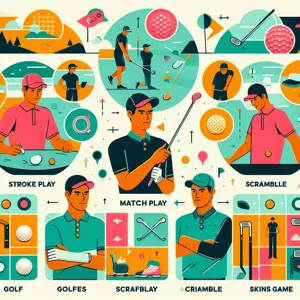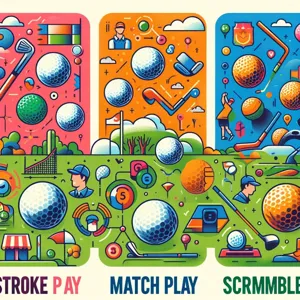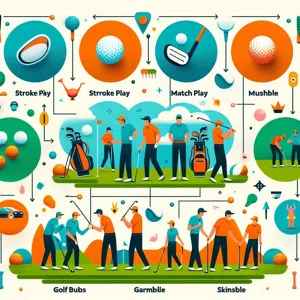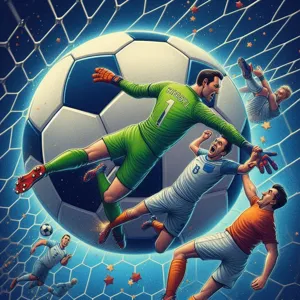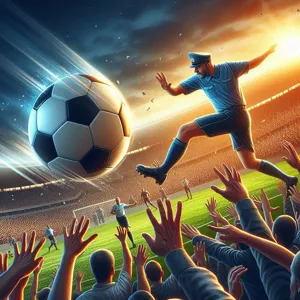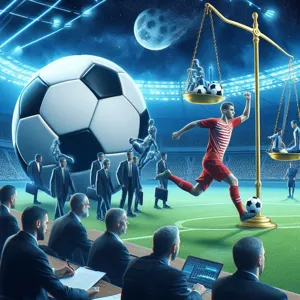As the gaming landscape continues to evolve, first-person shooters (FPS) remain a cornerstone of the PC gaming experience, captivating players with their adrenaline-pumping action and immersive storytelling.
In 2023, the genre has seen remarkable innovations, pushing the boundaries of graphics, gameplay mechanics, and multiplayer experiences. Whether you’re a seasoned pro or a newcomer looking to dive into the thrilling world of FPS games, this curated list of the top 10 must-play titles is designed to help you navigate the dynamic offerings available this year. From heart-stopping solo campaigns to exhilarating team-based battles, these games promise to deliver unforgettable moments and keep your pulse racing. Join us as we explore the standout FPS experiences that every PC gamer should have on their radar in 2023!
1. Introduction to the FPS Genre

First-person shooters (FPS) have evolved into one of the most dynamic and exhilarating genres in the gaming world, captivating players with their immersive gameplay and intense action. In an FPS game, players are thrust into the role of a character armed with an array of weapons, navigating through intricately designed environments from a first-person perspective. This unique viewpoint not only enhances the sense of realism but also amplifies the adrenaline rush that comes with navigating hostile territories, outsmarting opponents, and executing precise shots.
The genre boasts a rich history, dating back to the early days of gaming with classics like “Doom” and “Quake,” which set the stage for what would become a cultural phenomenon. As technology has advanced, so too have FPS games, incorporating stunning graphics, sophisticated AI, and compelling narratives that draw players into their worlds. Today, FPS titles are characterized by diverse gameplay styles, ranging from tactical team-based shooters to fast-paced multiplayer arenas, catering to a wide array of player preferences.
In 2023, FPS games continue to push boundaries, blending traditional mechanics with innovative features such as cross-platform play, battle royale modes, and extensive customization options. As we delve into the top must-play FPS games for PC gamers this year, we’ll explore how each title embodies the essence of the genre while offering unique experiences that keep players engaged and coming back for more. Whether you’re a seasoned veteran or new to the genre, this list will highlight the games that are defining the FPS landscape in 2023. Get ready to gear up, lock and load, and dive into the action!
2. Criteria for Selection
When curating a list of the top FPS games for PC gamers in 2023, several key criteria were considered to ensure that only the most compelling titles made the cut. First and foremost is gameplay mechanics; fluidity, responsiveness, and overall engagement are critical factors. A game may boast impressive graphics, but if the shooting mechanics feel clunky or unrefined, it simply won’t resonate with players.
Next, we look at innovation and originality. The FPS genre is vast and competitive, so games that introduce fresh elements—be it unique weapon systems, inventive level designs, or captivating storylines—deserve recognition. Originality not only keeps players hooked but also pushes the genre forward, challenging developers to create new and exciting experiences.
Multiplayer capabilities are another vital aspect of our selection process. In an age where social gaming thrives, a robust multiplayer mode can elevate a game’s status. Whether through competitive matches, cooperative missions, or expansive battlegrounds, we prioritized titles that foster community engagement and provide lasting replay value.
Graphics and sound design also play a significant role. These elements enhance immersion, drawing players deeper into the game world. Stunning visuals and well-crafted soundscapes can transform an ordinary FPS into an unforgettable experience, making them essential criteria for our list.
Lastly, community feedback and critical reception weighed heavily in our selection process. Player reviews, ratings, and gameplay discussions offer invaluable insights into a game’s longevity and appeal. After all, the opinions of fellow gamers can illuminate the strengths and weaknesses of a title far beyond initial impressions.
By combining these criteria, we’ve identified the top FPS games that not only captivate players but also redefine the genre in 2023. Whether you’re a seasoned sharpshooter or a newcomer to the battlefield, these selections promise hours of thrilling action and unforgettable moments.
3. Game #1: [Title] – Features and Highlights

The iconic franchise returns with *Call of Duty: Modern Warfare II*, setting a new standard for first-person shooters in 2023. This installment not only revives beloved characters and gripping narratives but also introduces a suite of groundbreaking features that elevate gameplay to exhilarating heights.
One of the standout elements of *Modern Warfare II* is its stunning graphics powered by the latest game engine. The hyper-realistic environments and detailed character models immerse players in a world that feels both familiar and fresh. From the bustling streets of urban warfare to the desolate landscapes of conflict zones, every setting is meticulously crafted, enhancing the overall experience.
The game also places a strong emphasis on tactical gameplay, encouraging players to strategize and collaborate with teammates. With an expanded arsenal of weapon customization options, players can tailor their loadouts to suit their unique playstyles. Whether you prefer the stealthy approach of a sniper or the all-out aggression of an assault rifle, the choice is yours, allowing for a deeper level of personalization.
*Modern Warfare II* also introduces an engaging single-player campaign that pulls players into a gripping narrative filled with unexpected twists and intense action sequences. The story unfolds across various global locations, presenting moral dilemmas and high-stakes missions that keep you on the edge of your seat.
Furthermore, the multiplayer modes have been revamped, offering a diverse range of gameplay options from classic team deathmatches to innovative modes that challenge even the most seasoned players. The addition of cross-platform play ensures that friends can join forces, regardless of their gaming setup, fostering a vibrant community that sustains the game’s longevity.
Lastly, the developers have committed to regular updates and seasonal content, ensuring that players always have something new to explore. This dedication to evolving gameplay keeps the community engaged and eagerly anticipating what’s next.
In summary, *Call of Duty: Modern Warfare II* is more than just a game; it’s an experience that captures the essence of what makes FPS games thrilling. With its captivating story, stunning visuals, and robust multiplayer options, this title is a must-play for any PC gamer in 2023.
4. Game #2: [Title] – Gameplay Mechanics and Graphics
Apex Legends stands out in the crowded field of battle royale games with its unique blend of fast-paced gameplay mechanics and stunning graphics. Set in the same universe as the Titanfall series, this free-to-play title has captivated gamers since its release in 2019, and it continues to evolve with each season.
At its core, Apex Legends features a squad-based format, where players select from a roster of diverse characters, known as Legends, each equipped with unique abilities that can dramatically alter the flow of combat. The gameplay mechanics emphasize teamwork and strategy, as players must synergize their chosen Legends’ skills to outmaneuver and outsmart opposing teams. For instance, the defensive capabilities of Gibraltar can complement the speed and agility of Wraith, creating an effective balance between offense and defense.
Movement in Apex Legends is another standout feature. The game encourages fluidity and speed, allowing for exhilarating parkour-style maneuvers, such as wall-running and sliding. This creates a dynamic playing experience where players can traverse the map with incredible agility, dodging enemy fire and repositioning themselves with ease. The addition of a “ping” system enhances communication between teammates, allowing for quick coordination without the need for voice chat, making it accessible for both seasoned players and newcomers alike.
Visually, Apex Legends is a feast for the eyes. The richly detailed maps are filled with vibrant colors and diverse environments, from bustling urban landscapes to serene mountain vistas. The character designs are equally impressive, reflecting the personalities and backgrounds of each Legend through their intricate designs and animations. The game runs smoothly on various PC setups, delivering high frame rates and stunning graphics that bring the action to life.
Whether you’re a fan of strategic gameplay or simply enjoy the thrill of fast-paced gunfights, Apex Legends offers an engaging experience that keeps players coming back for more. Its blend of innovative mechanics and breathtaking visuals solidifies its place as a must-play FPS title for PC gamers in 2023.
5. Game #3: [Title] – Multiplayer Experience

Step into the vivid world of *Overwatch 2*, where the lines between hero and villain blur in a fast-paced multiplayer arena that emphasizes teamwork and strategy. As a sequel to the beloved original, *Overwatch 2* builds on its predecessor’s strengths while introducing exciting new elements that elevate the multiplayer experience to new heights.
In *Overwatch 2*, players can choose from a diverse roster of heroes, each with their own unique abilities and roles, ranging from damage dealers to healers and tanks. This variety allows for a multitude of team compositions, making every match feel fresh and engaging. The game’s emphasis on collaboration means that success hinges on how well players communicate and coordinate with one another, turning each battle into a dynamic dance of tactics and skill.
The visuals are striking; colorful maps inspired by locations around the globe provide a stunning backdrop for intense engagements. The game introduces new modes and maps, including the much-anticipated PvE missions that give players a chance to dive into cooperative gameplay against AI opponents, allowing for both casual play and skill honing.
One of the standout features of *Overwatch 2* is its robust ranking system. Players can climb the competitive ladder, testing their skills against others and striving to achieve higher ranks. Seasonal events keep the gameplay fresh, introducing limited-time modes and unique cosmetics that encourage players to return to the battlefield again and again.
In essence, *Overwatch 2* offers a multiplayer experience that’s not only thrilling and fast-paced but also deeply rewarding. Whether you’re a seasoned veteran of the franchise or a newcomer looking to join the fun, this game invites you to rally your friends and immerse yourself in a vibrant world where every match is an opportunity for epic moments and unforgettable teamwork.
6. Game #4: [Title] – Storyline and Immersion
In a gaming landscape often dominated by multiplayer experiences, *Titanfall 2* stands out with its deeply engaging single-player campaign, making it a must-play for FPS enthusiasts in 2023. Set in a sprawling sci-fi universe, the game expertly weaves a narrative that follows the journey of jack Cooper, a rifleman who unexpectedly finds himself piloting a Titan—a massive mech—after his mentor falls in battle. This unique partnership between human and machine is at the heart of the game’s story, creating an emotional bond that pulls players into the narrative.
The campaign brilliantly balances intense combat with moments of reflection, allowing players to explore the world of the Frontier while uncovering the rich lore that surrounds it. Each level is meticulously crafted, offering a variety of gameplay mechanics that keep the experience fresh and exciting. Whether you’re navigating through lush forests or engaging in high-octane battles against enemy factions, the game’s design encourages exploration and rewards curiosity.
Immersion is enhanced by the game’s stunning visuals, dynamic environments, and fluid movement mechanics. The combination of wall-running, grappling hooks, and advanced combat techniques not only makes for exhilarating gameplay but also adds a layer of depth to the storytelling. The way the narrative integrates with the mechanics is a testament to the developers’ attention to detail, ensuring players are always engaged in both the action and the unfolding story.
*Titanfall 2* also features a compelling relationship between Jack and his Titan, BT-7274, which evolves throughout the campaign. Players will find themselves invested not just in their own survival but in the fate of their mechanized companion, making pivotal moments even more impactful. This narrative depth, coupled with exhilarating gameplay, solidifies *Titanfall 2* as a quintessential experience that every FPS aficionado should immerse themselves in this year. If you’re seeking a game that combines thrilling action with a heartfelt story, look no further than *Titanfall 2*.
7. Game #5: [Title] – Unique Weapons and Customization
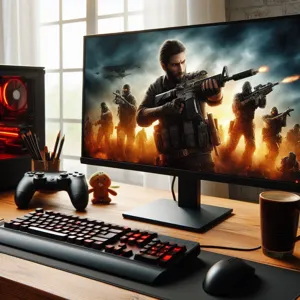
In the ever-evolving landscape of first-person shooters, *CyberStrike: Retribution* stands out as a beacon of innovation, particularly when it comes to its weaponry and customization options. Set in a dystopian future where advanced technology collides with brutal combat, this game not only immerses players in a gripping narrative but also empowers them to craft their own unique arsenal.
One of the most striking features of *CyberStrike: Retribution* is its extensive weapon customization system. Players can modify their firearms with an array of attachments, from holographic sights and extended magazines to unique skins that reflect their personality. But it doesn’t stop there—this game introduces a range of futuristic weaponry that includes energy-based firearms, grappling hook guns, and even deployable drones that can assist during intense firefights. Each weapon feels distinct, allowing players to experiment and find the perfect balance between firepower and style.
Moreover, *CyberStrike* enhances the FPS experience with its modular character system. Players can choose from various classes, each offering specialized abilities and skill trees that can be tailored to fit different playstyles. Want to be a stealthy infiltrator with enhanced agility and silent weaponry? Or perhaps you prefer the role of a heavy-hitting tank, equipped with armor-piercing rounds and a riot shield? The choice is yours, and the potential for unique gameplay experiences is virtually limitless.
The vibrant in-game economy further encourages players to engage in the customization process. As you progress through missions and multiplayer matches, you earn resources that can be spent on upgrading weapons or unlocking new mods. This rewarding cycle keeps players invested, ensuring that no two gaming sessions feel the same.
With its focus on unique weapons and deep customization mechanics, *CyberStrike: Retribution* not only elevates the FPS genre but also invites players to express their individuality in combat. Whether you’re a casual gamer or a competitive enthusiast, this title is a must-play for anyone looking to enrich their gaming library in 2023.
8. Game #6: [Title] – Competitive Scene and Esports Potential
Valorant has swiftly carved out its place in the hearts of FPS enthusiasts since its release. Developed by Riot Games, this tactical shooter combines precise gunplay with unique character abilities, creating a dynamic and strategic battlefield. What truly sets Valorant apart is its burgeoning competitive scene and immense esports potential.
The game’s structure encourages teamwork and communication, essential ingredients for any successful esports title. With its blend of traditional shooting mechanics and hero-based gameplay, Valorant presents endless opportunities for skill expression. Players must not only master their character’s abilities but also develop a keen understanding of maps, strategies, and opponent behavior. This complexity has given rise to a vibrant community of players who are eager to refine their skills and compete at higher levels.
Esports leagues and tournaments dedicated to Valorant have been springing up globally, drawing in some of the most talented players from around the world. The Valorant Champions Tour (VCT) has captured the attention of both casual viewers and fervent fans alike, showcasing intense matches that highlight the strategic depth and individual prowess required to succeed. Top teams, like Sentinels and Fnatic, have established themselves as powerhouses, and their matches are a must-watch for any FPS aficionado.
As the game continues to evolve with regular updates, new agents, and maps, the competitive landscape becomes increasingly exciting. Players are constantly adapting, and the meta shifts with each season, keeping the gameplay fresh and engaging. For PC gamers looking to dive into the competitive FPS scene in 2023, Valorant stands out not just as a game, but as a platform for aspiring esports athletes to showcase their skills and make their mark in the fast-paced world of competitive gaming. Whether you’re a casual player or aiming for the top ranks, Valorant offers an exhilarating experience that keeps players coming back for more.
9. Game #7: [Title] – Community and Modding Support
Apex Legends has firmly established itself as a titan in the realm of first-person shooters, not just for its fast-paced gameplay and stunning graphics, but also for its vibrant community and robust modding support. Released in early 2019, this battle royale game from Respawn Entertainment quickly captivated players with its unique blend of character abilities, teamwork, and innovative ping system, which enhances communication without the need for voice chat.
One of the most compelling aspects of Apex Legends is its dedicated community. Players have come together to form a passionate base, sharing strategies, highlights, and fan art across various platforms. The game regularly hosts events and updates that keep the community engaged and excited. Whether it’s through Twitter, Reddit, or Discord, players are constantly discussing patch notes, sharing loadout tips, or participating in community tournaments. This vibrant interaction not only fosters camaraderie but also helps newcomers feel welcomed, significantly enhancing the overall gaming experience.
Moreover, while Apex Legends is primarily a closed-source title, the modding scene has grown organically. Talented fans have created various tools and resources that help players track their stats, improve their gameplay, and even create custom overlays. Though not as extensive as some other titles in the modding community, the available tools are a testament to the game’s adaptability and the fierce dedication of its players. Additionally, Respawn has shown a willingness to listen to community feedback, incorporating player suggestions into updates and expansions, further solidifying the bond between developers and fans.
In 2023, Apex Legends continues to thrive, not only as a competitive FPS but as a platform for community-driven content and collaboration. Whether you’re a seasoned veteran or just starting your journey, the rich community and modding support make this title a must-play, ensuring that it remains fresh and exhilarating every time you drop into the arena.
10. Game #8: [Title] – Cross-Platform Play Capabilities
Apex Legends continues to dominate the competitive FPS landscape in 2023, not only for its high-octane gameplay and unique characters but also for its seamless cross-platform play capabilities. This feature allows gamers to connect and compete with friends, regardless of the platform they’re on, whether it’s PC, PlayStation, Xbox, or even Nintendo Switch.
One of the most appealing aspects of Apex Legends is how it brings together a diverse community of players. Imagine dropping into the stunningly designed maps of Kings Canyon or Olympus alongside friends who are on different consoles. The game’s cross-play functionality ensures that no one is left out, fostering teamwork and camaraderie that transcends hardware boundaries.
Moreover, the matchmaking system intelligently pairs players of similar skill levels, enhancing the competitive experience and ensuring that everyone can enjoy the thrill of battle without feeling outmatched. Whether you’re executing a perfect tactical maneuver with your squad or battling it out in intense firefights, the ability to play with friends, regardless of their gaming setup, elevates the overall enjoyment of the game.
Additionally, Apex Legends keeps the gameplay fresh with regular updates that introduce new legends, weapons, and limited-time events, ensuring that players always have something new to look forward to. With its dynamic gameplay, engaging storylines, and robust cross-platform capabilities, Apex Legends is a must-play for any FPS enthusiast looking to connect with friends and dominate the battlefield in 2023.
11. Game #9: [Title] – Overall Performance and Optimization
When it comes to first-person shooters, *Doom Eternal* has set the bar high with its electrifying gameplay and stunning visuals. This 2020 release continues to captivate gamers in 2023, not just for its fast-paced action but also for its remarkable performance and optimization.
Developed by id Software, *Doom Eternal* is built on the id Tech 7 engine, which offers an impressive blend of cutting-edge graphics and smooth gameplay mechanics. The game runs exceptionally well on a variety of PC configurations, making it accessible to both high-end users and those with more modest setups. Even if you’re not equipped with the latest hardware, you can still enjoy a visually rich experience by tweaking the graphics settings to match your system’s capabilities.
The optimization efforts are evident in several areas. For starters, the game features a robust frame rate that remains stable even during the most chaotic battles, allowing players to react swiftly and maintain precision during intense encounters. With options for V-Sync and frame rate cap adjustments, players have the flexibility to create a tailored gaming experience that feels just right.
Moreover, *Doom Eternal* boasts impressive load times, thanks in part to its efficient asset streaming. This means you can dive straight into the action without lengthy waits, keeping the adrenaline pumping and the pace relentless. The game also supports a broad range of resolutions and aspect ratios, ensuring that it looks fantastic whether you’re playing on a standard monitor or an ultra-wide display.
Overall, *Doom Eternal* not only excels in gameplay and story but also in its technical execution. The optimization makes it a standout title that runs smoothly across various systems, making it a must-play for FPS enthusiasts looking for a thrilling and visually stunning experience in 2023. Whether you’re a seasoned veteran or a newcomer to the genre, this title guarantees an unforgettable ride through hell and back.
12. Game #10: [Title] – Upcoming DLCs and Future Updates
As the dust settles on the thrilling campaigns and intense multiplayer matches of *Call of Duty: Modern Warfare II*, players are already buzzing with excitement about what’s next for this powerhouse title. The developers have committed to keeping the adrenaline pumping with a series of highly anticipated DLCs and updates slated for release throughout 2023.
One of the most exciting upcoming expansions is the “Battlefield of Tomorrow” DLC, which promises to introduce new maps, modes, and a wealth of weapons that will further diversify the gameplay experience. Set against the backdrop of a futuristic warzone, this expansion is expected to push the boundaries of tactical warfare, incorporating advanced technology and new gameplay mechanics that challenge even veteran players.
In addition to new content, the developers are also focused on enhancing the overall player experience. Regular updates will address balance issues, tweak weapon performance, and introduce quality-of-life improvements based on community feedback. This responsiveness to player concerns showcases the developers’ dedication to fostering a vibrant and engaging gaming community.
Moreover, seasonal events are on the horizon, offering limited-time game modes and unique cosmetic rewards that will keep players returning to the battlefield. With the promise of continuous content drops, *Modern Warfare II* is poised to maintain its position as a frontrunner in the FPS genre.
As we dive into 2023, the future looks bright for *Call of Duty: Modern Warfare II*. Whether you’re a seasoned soldier or a newcomer to the series, the upcoming DLCs and updates are sure to elevate your gameplay experience, ensuring that this title remains an essential pick for any FPS aficionado. Stay tuned and keep your gear ready—there’s plenty more action on the way!
13. Conclusion: The Future of FPS Gaming
As we wrap up our exploration of the top 10 must-play FPS games for PC gamers in 2023, it’s clear that the future of first-person shooters is as exciting as ever. With advancements in technology, developers are pushing the boundaries of what is possible in gaming, delivering experiences that are not only visually stunning but also immersive and engaging. The integration of virtual reality (VR) and augmented reality (AR) is expected to redefine gameplay dynamics, allowing players to step into their favorite worlds like never before.
Moreover, the rise of artificial intelligence (AI) in game design is paving the way for more intelligent and adaptive enemies, creating a more challenging and unpredictable environment. As multiplayer experiences continue to evolve, we can anticipate richer cooperative and competitive gameplay, fostering a sense of community among players. With cross-platform capabilities becoming increasingly common, the barriers between gaming communities are breaking down, allowing friends to unite regardless of their preferred devices.
Additionally, the trend towards personalized gaming experiences will likely grow, with developers focusing on player choice and narrative-driven content. This will provide gamers with a sense of agency, allowing them to shape their own stories within the FPS genre. As eSports continues to gain traction, we can also expect to see more FPS titles making their mark in competitive gaming, attracting both players and spectators alike.
In conclusion, the future of FPS gaming is bright, with endless possibilities on the horizon. Whether you’re a seasoned veteran or a newcomer to the genre, the next wave of FPS games promises to be an exhilarating journey filled with innovation, excitement, and unforgettable moments. So gear up, aim steady, and get ready to embrace the thrilling adventures that await in the world of first-person shooters!
14. Bonus: Honorable Mentions
While we’ve highlighted our top contenders for the must-play FPS games of 2023, there are several titles that, while not making the main list, certainly deserve a shout-out. These honorable mentions have captivated players with their unique gameplay mechanics, compelling stories, and immersive worlds.
First on the list is **”Wolfenstein: Youngblood.”** This cooperative adventure spins the narrative of the iconic Wolfenstein series, allowing players to team up and take down the oppressive regime in a thrilling alternate history. With fast-paced gunplay and a vibrant art style, it’s a wild ride worth exploring.
Another notable mention is **”Insurgency: Sandstorm.”** This game brings a gritty realism to the FPS genre, emphasizing tactical gameplay and teamwork. Players are thrust into intense, chaotic battles that require precision and strategy, making it a favorite among fans of military shooters.
**”Battlefield 2042″** also deserves recognition, despite its rocky launch. With its massive maps, dynamic weather systems, and an emphasis on large-scale warfare, it has the potential to deliver epic battles, especially with the continuous updates and improvements from the developers.
Don’t forget about **”Apex Legends,”** which blends the battle royale format with the fast-paced action of a traditional FPS. Its character abilities add a unique twist to gameplay, allowing for diverse strategies and team compositions that keep players coming back for more.
Lastly, **”Halo: The Master Chief Collection”** is a nostalgic treasure for fans of the franchise. It compiles several classic titles from the beloved series, offering thrilling campaigns and iconic multiplayer modes that have stood the test of time.
These honorable mentions may not have made the top 10, but they each bring something special to the table. Whether through innovative mechanics, engaging narratives, or simply the thrill of gameplay, these titles are sure to enhance any PC gamer’s library in 2023. Don’t overlook them as you dive into the diverse and exhilarating world of first-person shooters!
15. Call to Action: Share Your Favorites!
As we wrap up our exploration of the top 10 must-play FPS games for PC gamers in 2023, we want to hear from you! The gaming community is ever-evolving, with new titles and hidden gems continually surfacing. What are your personal favorites? Are there any thrilling first-person shooters that left you on the edge of your seat this year? Perhaps you’ve discovered a lesser-known indie gem that deserves a shout-out.
Engaging with fellow gamers enriches our shared experience, allowing us to expand our horizons and discover games we might not have encountered otherwise. So, drop a comment below and share your top picks! Whether it’s the adrenaline-pumping action of a blockbuster franchise or the innovative mechanics of an indie title, let us know what has captured your attention this year.
Moreover, if you have recommendations for upcoming games that you’re excited about, don’t hold back! Your insights could help fellow gamers find their next obsession. We can’t wait to hear your thoughts and build a vibrant discussion around the FPS titles that keep us glued to our screens. So, grab your keyboards and let’s keep the conversation going—your favorites might just inspire someone else’s next epic gaming session!
As we wrap up our exploration of the top 10 must-play FPS games for PC gamers in 2023, we hope you’re feeling inspired and ready to dive into these thrilling virtual worlds. Each title on our list offers unique mechanics, captivating narratives, and immersive gameplay that cater to a wide range of preferences—whether you’re a seasoned veteran or a newcomer to the genre. With cutting-edge graphics and engaging multiplayer experiences, these games not only push the boundaries of first-person shooters but also promise hours of entertainment and camaraderie with fellow gamers. So, grab your mouse and keyboard, rally your friends, and get ready to embark on adrenaline-pumping adventures that will keep you on the edge of your seat. Happy gaming!














